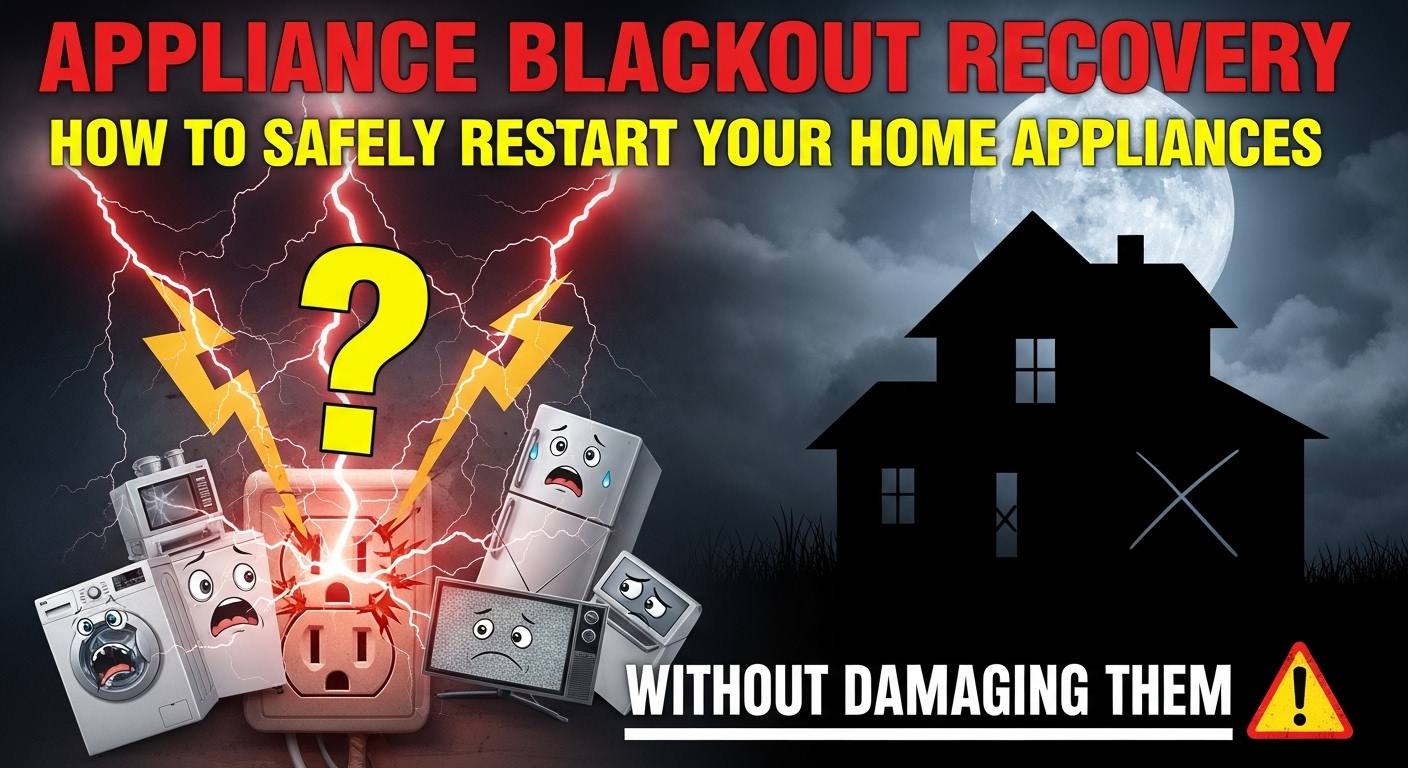Worried about your expensive appliances getting fried when the power comes back on after Burnaby’s latest storm knocked out electricity to your neighborhood? You’re absolutely right to be concerned – post-outage power surges cause more appliance damage than the blackouts themselves, and knowing the proper restart sequence can save you thousands in replacement costs.
Picture this nightmare scenario: you’re settling into your Burnaby home after a typical Pacific Northwest windstorm when suddenly everything goes dark. The familiar hum of your refrigerator stops, your smart TV cuts out mid-show, and you’re left wondering what just happened to your electrical system. Power outages in the Fraser Valley aren’t uncommon, especially during those intense autumn storms that roll through British Columbia with increasing frequency and severity.
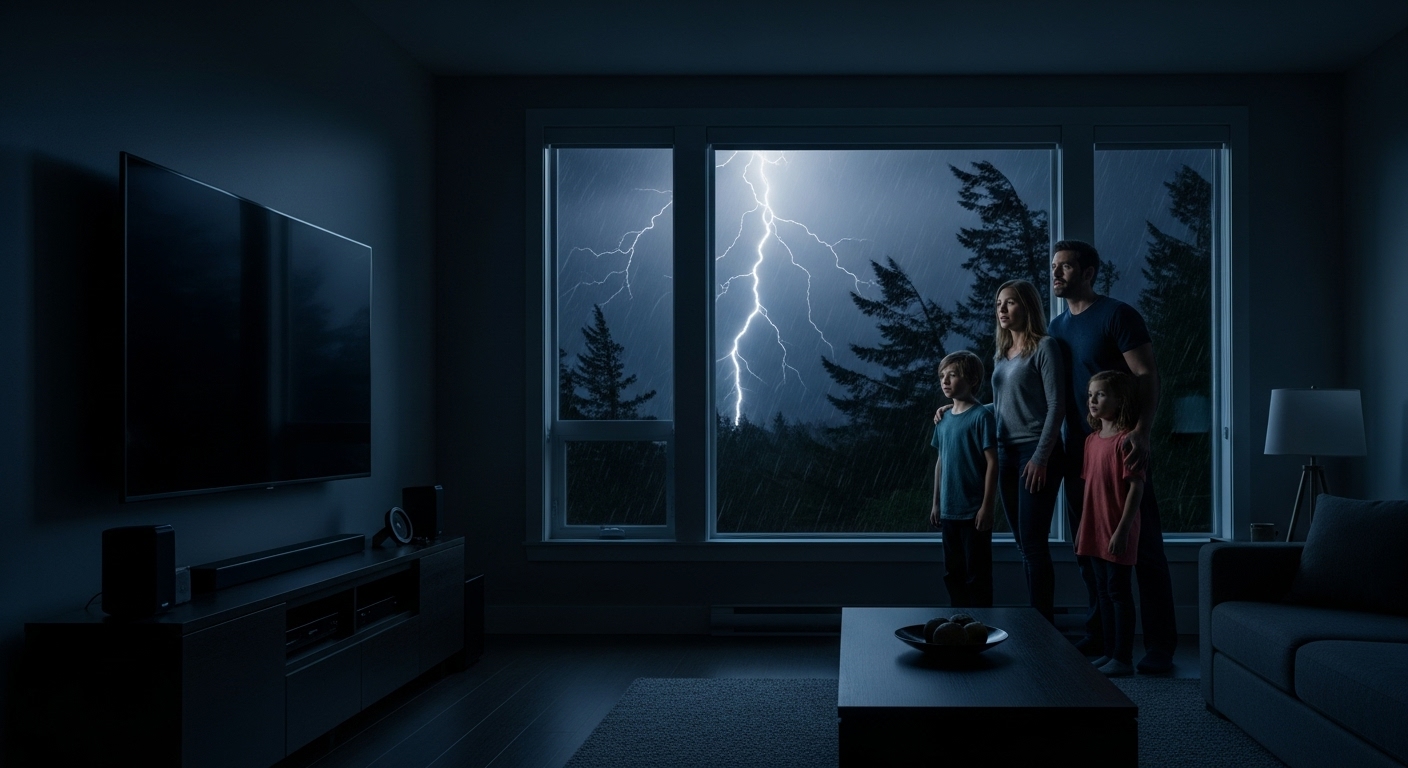
What many homeowners don’t realize is that the real danger to your valuable appliances often comes not during the outage itself, but in those critical moments when BC Hydro restores electricity to your neighborhood. When power suddenly surges back into your home’s systems, it can create voltage spikes that permanently damage sensitive electronics faster than you can flip a circuit breaker. Your expensive smart refrigerator, that brand-new heat pump, or even your trusty washing machine could become casualties of an improper restart sequence.
The stakes are higher than most Burnaby residents understand. With our region experiencing an average of 463 power outages annually and modern homes containing approximately $15,000 worth of surge-sensitive electronics and appliances, knowing proper recovery procedures isn’t just about convenience – it’s about protecting your financial investment. From immediate safety protocols during blackouts to systematic appliance restart procedures, this comprehensive guide covers everything you need to know about safely bringing your home back online after electrical disruptions in the Burnaby area.
Key Outtakes:
- Wait 15-30 minutes after power restoration before restarting major appliances to allow electrical systems to stabilize and prevent surge damage from neighborhood-wide simultaneous startups
- Unplug all non-essential electronics and appliances during outages to protect them from the power surge that occurs when electricity is restored, but leave refrigerators connected while keeping doors closed
- Follow appliance-specific restart sequences with different wait times – air conditioners need 30 minutes for pressure equalization while dishwashers only require 5-10 minutes for control panel resets
- Check and reset circuit breakers before attempting appliance restarts, as power outages frequently trip breakers that need manual resetting using proper safety procedures
- Monitor all restarted appliances for 72 hours post-outage, documenting any unusual behavior for warranty claims since surge damage often appears as delayed performance issues rather than immediate failure
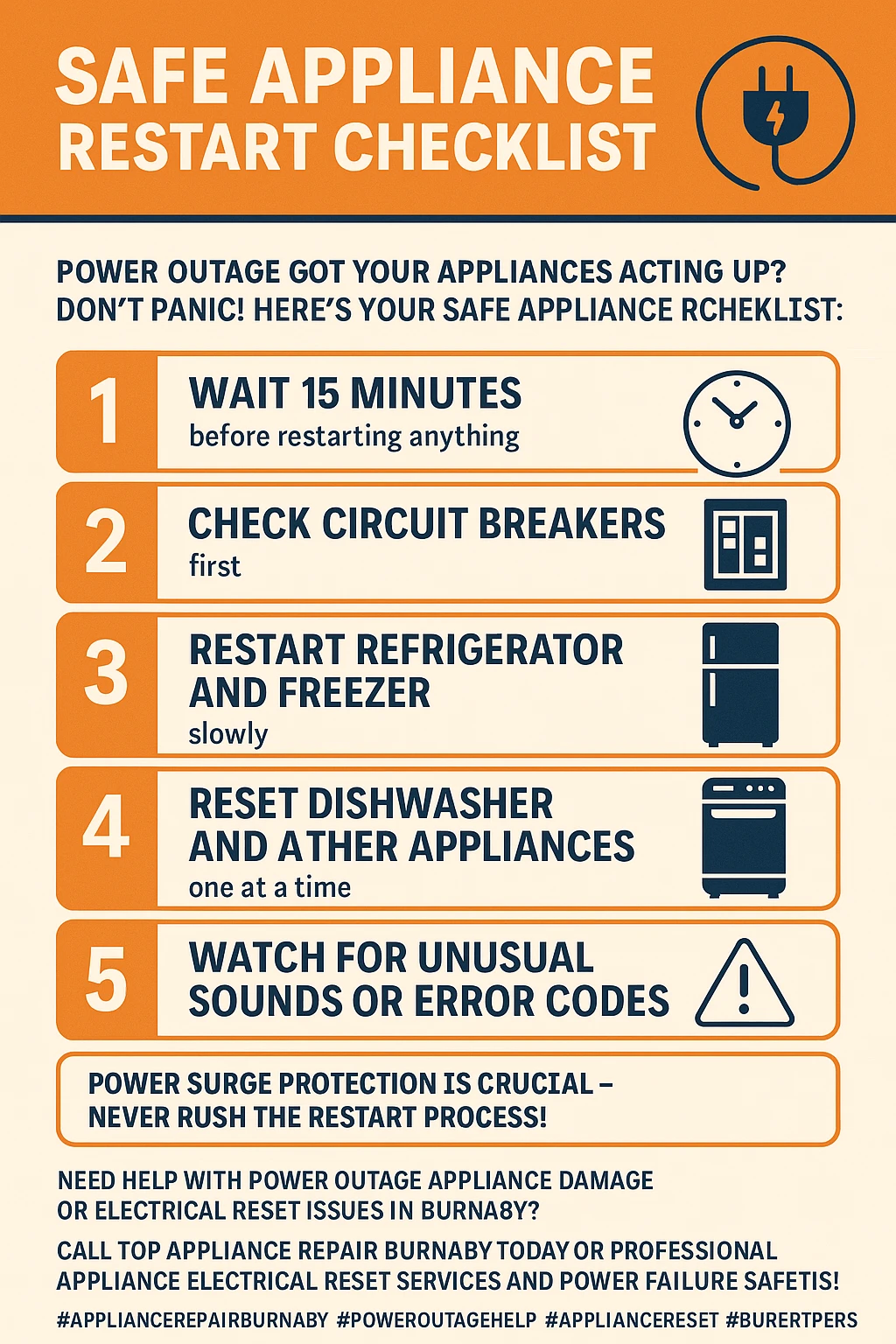
Understanding Power Outage Risks to Your Burnaby Home Appliances
Let’s get real about what makes Burnaby particularly vulnerable to appliance-damaging power events. Our city sits directly in the path of BC’s storm corridor, where Pacific weather systems slam into the Lower Mainland with increasing intensity. The numbers tell a sobering story – Burnaby experiences an average of 463 power outages annually, with storm-related events lasting up to 8 hours on average. That’s not just an inconvenience statistic; each outage creates perfect conditions for appliance-destroying power surges when electricity gets restored.
Here’s the thing most homeowners miss: the restoration phase creates far more dangerous electrical conditions than the actual blackout. When power returns after an outage, the entire neighborhood simultaneously turns appliances back on, creating massive demand surges that can destabilize the grid and trigger voltage spikes. These surges typically last only microseconds, but they carry enough electrical energy to permanently destroy the microprocessors that control modern appliances. Your smart refrigerator’s circuit board, your heat pump’s control system, or your washing machine’s electronic sensors can all receive fatal damage in the blink of an eye.
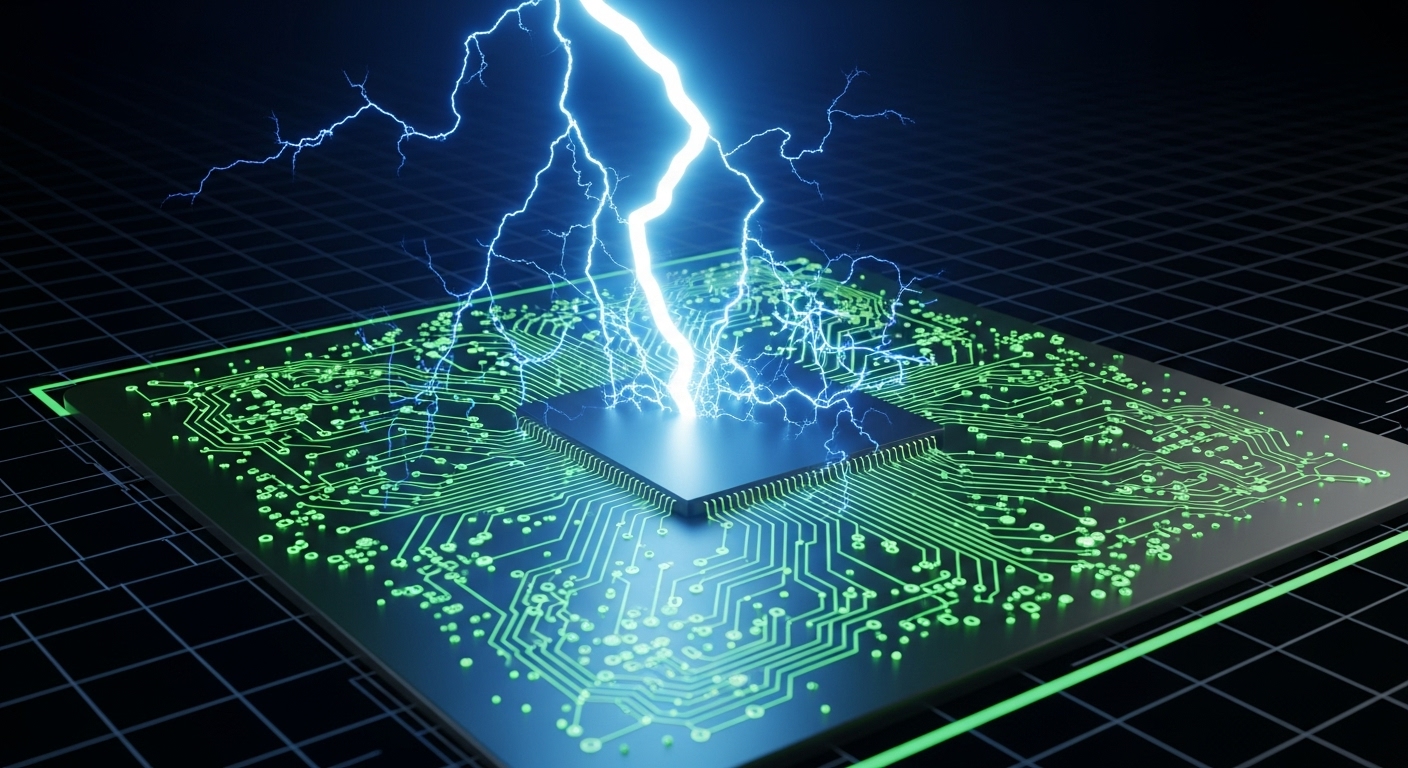
The financial vulnerability in Burnaby homes is staggering when you add up everything at risk. Vancouver-area homes contain approximately $15,000 worth of surge-sensitive electronics and appliances that could be permanently damaged by electrical events. We’re talking about your smart TV, gaming console, laptop, kitchen appliances with digital controls, HVAC system components, and basically anything with a circuit board inside. Unlike the simple motors and heating elements in older appliances, today’s smart devices are essentially computers disguised as household equipment, making them exponentially more vulnerable to voltage fluctuations.
What makes this crisis even worse is that many power surges happen gradually through repeated small electrical stresses. The average home experiences about 20 power surges every single day from normal appliance cycling and electrical grid fluctuations. Each voltage spike weakens capacitors, circuit boards, and control systems inside your appliances. Your microwave might start displaying error codes randomly, your dishwasher could develop intermittent problems, or your heat pump might begin operating erratically – all because accumulated surge damage has slowly compromised their internal electronics over time.
Climate change has fundamentally altered our regional risk profile, with BC Hydro reporting that the province’s worst storms have all occurred within just the past five years. Drought conditions during summer months weaken trees throughout the Lower Mainland, making them more susceptible to wind damage even during moderate weather events. When these compromised trees contact power lines during storms, the resulting electrical faults send chaotic voltage spikes racing through the grid before protective systems can respond, creating widespread appliance damage across entire neighborhoods.
Immediate Protective Actions During Power Outages
The moment your power cuts out, every appliance in your home enters a vulnerable state that requires immediate protective action. Those crucial first sixty seconds after an outage determine whether your electronics emerge unscathed or become expensive repair projects. Think of this period as your window of opportunity to minimize potential damage and protect your most valuable equipment from the electrical chaos that accompanies power restoration.
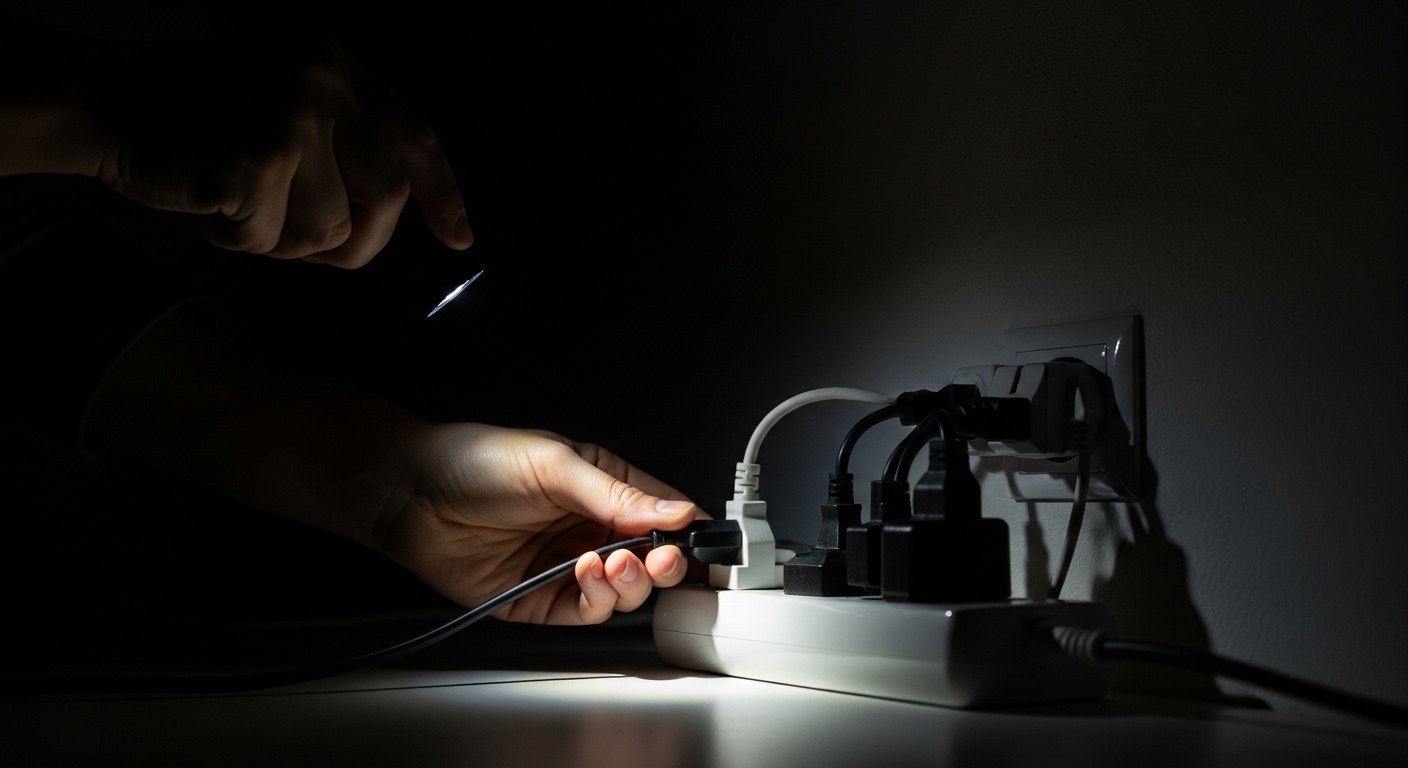
Your first priority should be immediately unplugging sensitive electronics throughout your home. Televisions, computer equipment, game consoles, fans, lights and all smaller appliances should be unplugged during an outage, especially if they were operating when power went out. This might seem like a hassle stumbling around in the dark, but it’s infinitely easier than explaining to your insurance company why you didn’t take basic protective measures when your entertainment center gets fried by restoration surges.
However, don’t unplug everything indiscriminately. Larger appliances such as refrigerators should not be unplugged during power outages, but you must commit to keeping their doors closed. Opening refrigerators and freezers during outages releases precious cold air and forces the systems to work harder when power returns. A properly sealed refrigerator can maintain safe temperatures for about four hours, while a full freezer stays frozen for 24 to 48 hours depending on how full it is.
Circuit breaker assessment represents another critical immediate step that many homeowners overlook. Head to your electrical panel with a flashlight and determine whether the outage affects just your home or the entire neighborhood. If your neighbors still have power, you might have tripped a main breaker or experienced a localized electrical problem. However, before resetting a breaker, you must determine the cause of the trip – repeatedly resetting a breaker without addressing the underlying issue could result in dangerous arc flash incidents or electrical fires.
Turn off all lights and lamps throughout your home except for one inside and one outside. This simple step serves multiple purposes: it reduces the electrical load on your system when power returns, provides a clear visual indicator when electricity is restored, and helps utility crews verify that power has been successfully restored to homes in the affected area. Managing electrical load during restoration prevents the cascading failures that occur when too many devices attempt to restart simultaneously.
If you’re using emergency equipment during extended outages, safety becomes paramount. Never set up a portable generator in an enclosed space and ensure it’s at least 20 feet away from any window, door, or vent. Generator-related carbon monoxide poisoning kills dozens of people every year, and improperly installed generators can create deadly backfeed conditions that electrocute utility workers trying to restore power to your neighborhood.
